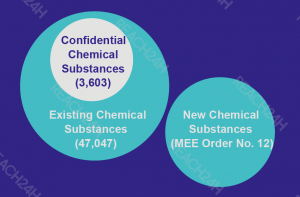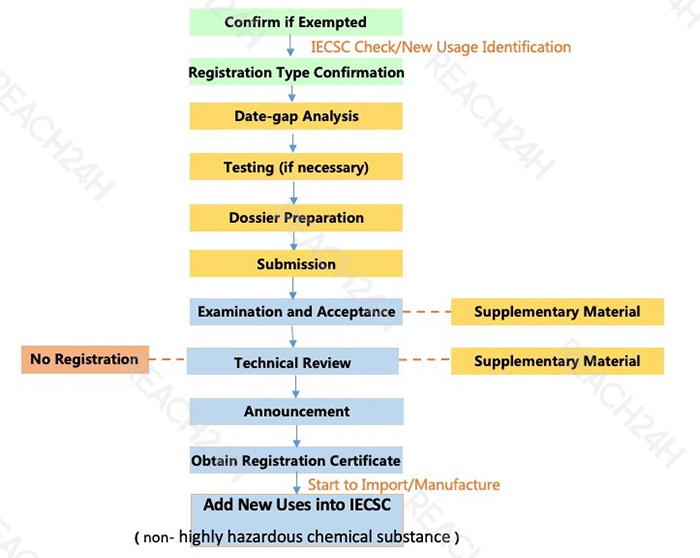New Usage Management Registration | China New Chemical Substance Registration (China REACH)
Overview
The Measures for the Environmental Management Registration of New Chemical Substances (Order No. 12 of the Ministry of Ecology and Environment of the P. R. China, MEE Order No. 12) was released in April 2020 and came into effect from January 1, 2021. It has replaced the Measures on the Environmental Management of New Chemical Substance (MEP Order No.7) and become a brand-new management standard for new chemical substances in China.
MEE Order No. 12 shall apply if companies plan to manufacture or import chemicals not listed in the Inventory of Existing Chemical Substances in China (IECSC). Registration dossiers should be submitted to the Solid Waste and Chemicals Management Center of MEE (SCC-MEE) and apply for approval. A certificate should be granted before any new chemical substance enters the China market, otherwise, relevant companies will be subject to severe penalties.
IECSC was last updated on November 25, 2024.
China New Chemical Substance Registration (China REACH) includes regular registration, simplified registration, record registration, and new usage management registration.
New Usage Management Registration
Applicable Conditions
When a chemical substance listed in the Inventory of Existing Chemical Substances in China (IECSC) with specified restricted use will be used for other industrial use, it is subject to the New Usage Management Registration, there is no down or upper volume limit for this type of registration.
Registration Bodies
- For highly hazardous chemical substances, the registration certificate holder who intends to change the use, or other manufacturers, importers or processing users who intend to use for industrial purposes other than the registration certificate holder;
- For chemical substances with PB or PT or BT properties, the manufacturers, importers or processing users who intend to use them for industrial purposes other than the ones specified on the inventory are subject to registration.
Required Materials
- Regular registration application form
- Appendixes to the application form:
- Legal person certificate or business license, representation contract or agreement, authorization letter
- Testing report or data
- Environmental exposure assessment report and environmental risk control measures for new use
- Relevant hazard characteristic test report or data for specific exposure route for new use (if necessary)
- Socio-economic benefit analysis report (for highly hazardous new chemicals)
- Qualification of testing institutes
- Other information already obtained by the applicant on the environmental and health hazard properties and environmental risks of the substance
Process of New Usage Management Registration
Registration Period
The registration period of record registration is 5~8 months.
Related Information
Updated FAQs for China New Chemical Substance Registration
Our Services
- Representative Agent Service
- New Usage Management Identification Service
- New Chemical Substance New Usage Management Registration
- Overall Registration Scheme
- Data Assessment/Data Gap Analysis/Exemption Analysis/PBT Properties Identification
- Non-testing Assessment Report (QSAR, Read-across)
- Test Monitoring
- Environmental Exposure Assessment Report / Social Economic Effectiveness Analysis Report Preparation
- Communication with Competent Authorities/Experts
- Translation for Registration Documents
- Customized Training
Why Choose REACH24H
- Close relationships and good communication channels with competent authorities and experts.
- Rich experience: Above 10-year practical experience in the field of China’s new chemical management regulation.
- Outstanding performance: As of December 2021, REACH24H has successfully submitted more than 3,000 applications under MEP Order No. 7, including dozens of high-tonnage difficult substances, and the pass rate is 100%.
- Strong technical strength: We have a team of above 30 senior technical personnel with academic and professional backgrounds in toxicology, analytical chemistry, chemical engineering, biology, pharmacology, environment, etc.



